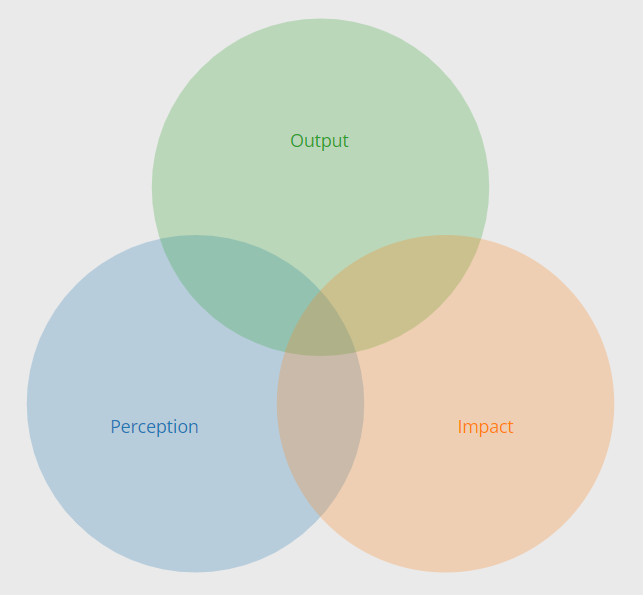The Intersection of Output, Impact, and Perception

As professionals, it's essential to not only focus on the output of our work but also consider the impact and perceived impact of our actions.
Output refers to the tangible results of our efforts. For example, completing a project on time, delivering a report, or closing a sale. Output is often measured in terms of efficiency and effectiveness, and it's essential to strive for high output to meet goals and achieve success.
Impact, on the other hand, refers to the direct and indirect effects of our work on others. For example, improving a company's bottom line, increasing customer satisfaction, or making a positive difference in the lives of those we serve. While output is about what we accomplish, impact is about the difference we make.
Perceived impact is the way that others perceive our work. This includes not only the direct effects of our actions, but also how we are perceived by colleagues, clients, and stakeholders. For example, if we are perceived as reliable and trustworthy, we may have a higher perceived impact even if our output is not necessarily the highest.
It's essential to strive for both high output and impact in our work, but we should also be aware of the perceived impact of our actions.
By considering all three of these factors, we can create a holistic approach to our work that leads to personal and professional success.